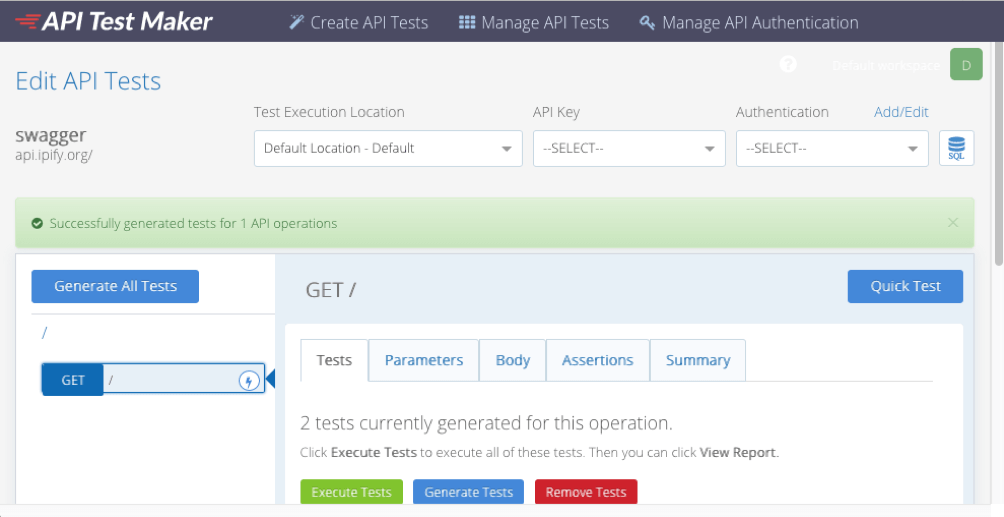

- #Swagger editor local how to#
- #Swagger editor local install#
- #Swagger editor local code#
- #Swagger editor local free#
If you intend to keep the file in JSON format, you can open it in the editor as follows: Right click the JSON OpenAPI document in Project Explorer. Swagger Editor can be run locally or accessed on the Web. The Swagger Editor is an open source editor to design, define and document RESTful APIs in the Swagger Specification.
#Swagger editor local free#
The Swagger Specification and all public tools under the swagger-api GitHub account are free to use and licensed under the Apache 2.0 License.
#Swagger editor local install#
In this post, you will learn only to install Swagger Editor and Swagger UI. Swagger Inspector is for testing the APIs endpoints in the cloud and it is paid. The Swagger Editor, Swagger UI, and Swagger Codegen are free and open-source tools while Swagger Hub is free for one user and paid for organizations and teams.

#Swagger editor local how to#
See unpkg's main page for more information on how to use unpkg. Using StandalonePreset will render TopBar and ValidatorBadge as well.
#Swagger editor local code#
You can embed Swagger UI's code directly in your HTML by using unpkg's interface: This will serve Swagger UI at /swagger instead of /.įor more information on controlling Swagger UI through the Docker image, see the Docker section of the Configuration documentation. The base URL of the web application can be changed by specifying the BASE_URL environment variable: docker run -p 80:8080 -e BASE_URL=/swagger -e SWAGGER_JSON=/foo/swagger.json -v /bar:/foo swaggerapi/swagger-ui Or you can provide your own swagger.json on your host docker run -p 80:8080 -e SWAGGER_JSON=/foo/swagger.json -v /bar:/foo swaggerapi/swagger-ui Will start nginx with Swagger UI on port 80. You can pull a pre-built docker image of the swagger-ui directly from Docker Hub: docker pull swaggerapi/swagger-uiĭocker run -p 80:8080 swaggerapi/swagger-ui SwaggerUIBundle is equivalent to SwaggerUI. SwaggerUIBundle.SwaggerUIStandalonePreset You could do something like this: var SwaggerUIBundle = require('swagger-ui-dist').SwaggerUIBundle If you're in a JavaScript project that can't handle a traditional npm module, The module also exports SwaggerUIBundle and SwaggerUIStandalonePreset, so

The folder also has an index.html asset, to make it easy to serve Swagger UI like so: const express = require('express')Ĭonst pathToSwaggerUi = require('swagger-ui-dist').absolutePath() The most useful file is swagger-ui-bundle.js, which is a build of Swagger UI that includes all the code it needs to run in one file. The module's contents mirror the dist folder you see in the Git repository. Will result in more code going across the wire. Note: we suggest using swagger-ui when your tooling makes it possible, as swagger-ui-dist The module, when imported, includes an absolutePath helper function that returns the absolute filesystem path to where the swagger-ui-dist module is installed. In contrast, swagger-ui-dist is meant for server-side projects that need assets to serve to clients. See the Webpack Getting Started sample for details. Here's an example: import SwaggerUI from 'swagger-ui' Its main file exports Swagger UI's main function, and the module also includes a namespaced stylesheet at swagger-ui/dist/swagger-ui.css. Swagger-ui is meant for consumption by JavaScript web projects that include module bundlers, such as Webpack, Browserify, and Rollup.

We publish two modules to npm: swagger-ui and swagger-ui-dist. Installation Distribution channels NPM Registry


 0 kommentar(er)
0 kommentar(er)
